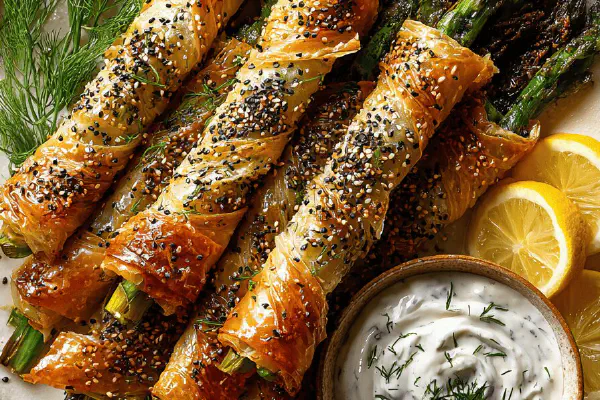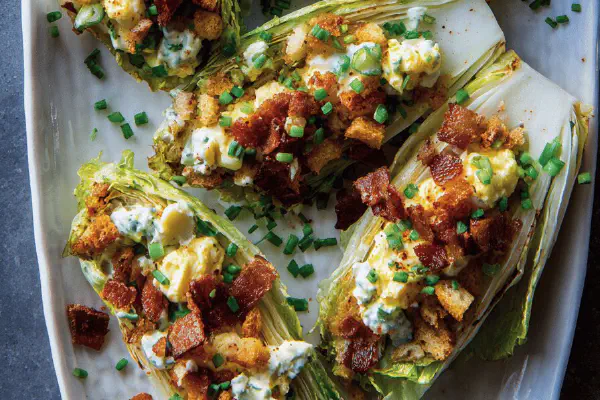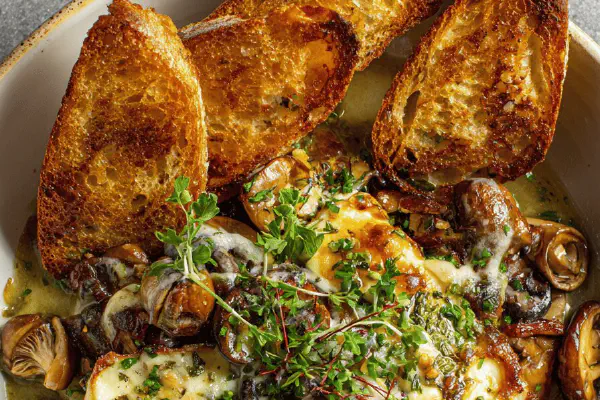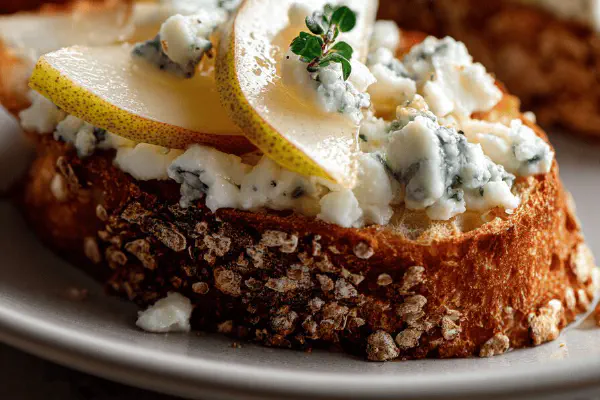Crunchy Wrapped Asparagus

By Emma
Certified Culinary Professional
Ingredients
Herb Sauce
- 65 ml (1/4 cup plus 1 tsp) plain yogurt
- 65 ml (1/4 cup plus 1 tsp) mayonnaise
- 2.5 ml (1/2 tsp) chopped tarragon
- 2.5 ml (1/2 tsp) chopped thyme
- 1/2 lemon, finely zested
- Salt and black pepper to taste
Asparagus
- 60 g (1/4 cup plus 1 tbsp) unsalted butter
- 2.5 ml (1/2 tsp) chopped tarragon
- 1.5 ml (1/4 tsp) poppy seeds (substitute for chili flakes)
- 3 sheets filo pastry
- 24 large asparagus, trimmed
About the ingredients
Method
Herb Sauce
- 1. Mix yogurt, mayo, tarragon, thyme, and lemon zest thoroughly in a bowl. Season with salt and black pepper. Cover and chill until needed. Texture should be creamy but fresh; flavors meld better cold.
Asparagus Preparation
- 2. Center oven rack and preheat to 220 °C (430 °F). Line baking sheet with parchment—prevents sticking and allows crisp bottoms.
- 3. Melt butter in saucepan. Stir in tarragon, lemon zest, and poppy seeds. Season with salt and pepper. Remove off heat to avoid burning herbs. Butter mix adds moisture and flavor; too hot ruins herbs and zest.
- 4. On a clean surface, stack filo sheets. Brush butter on each layer carefully—keep pastry covered to stop drying and cracking. Butter acts as glue and crisping agent.
- 5. Cut filo stack into 3 long strips lengthwise, then cut each strip into 4 squares. Cut each square diagonally to make 24 triangles total—more manageable than handling whole sheets.
- 6. Take one asparagus spear, place on corner of triangle, roll tightly but gently, covering the middle. Too loose: unwraps in oven; too tight: asparagus breaks or pastry tears. Arrange wrapped spears on baking sheet spaced out for even heat circulation.
- 7. Brush tops with leftover butter mixture for extra flavor and color. Ensures golden, crackly outside—key for texture contrast with tender asparagus.
- 8. Bake for 12–15 minutes, flipping halfway when pastry bubbles and edges turn golden brown. Oven heat varies; watch for that signature shatter-crisp sound and bronzed bubbles. Over-baking dries pastry and overcooks asparagus; underbaking leaves dough soggy.
- 9. Plate immediately, serve warm with the chilled herb sauce dolloped on the side for dipping or drizzling; contrasts hot–cold sensations. Sauce freshness cuts through butter richness.
- 10. Pro tips: If filo dries, cover remainder with damp towel. Substitute tarragon and thyme with basil or oregano, but keep lemon zest to preserve brightness. Poppy seeds lend subtle nutty crunch instead of heat if preferred. Or swap butter for olive oil for lighter note but less crispness.
- 11. Leftover sauce repurposes as sandwich spread or salad dressing. Wrapping method works well with green beans or thin carrot sticks as variation.
- 12. Remember to trim asparagus ends well–woody parts ruin bite, hold moisture distinctively when baking.
Cooking tips
Chef's notes
- 💡 Butter temperature crucial. Melt off heat, lukewarm at most. Too hot kills herbs, bitter zest. Brush filo gently, layer by layer. Keep sheets covered or dry edges crack and crumble when baking. Damp towel nearby mandatory, filo hates air exposure.
- 💡 Trim asparagus well. Woody ends ruin bite, pull moisture unevenly. Thick stalks roll better; thin snap or tear pastry unless wrapped tightly but not crushing. Practice roll tension; tight snaps veg, loose peels pastry in oven. Balance is key, learned from too many unrolling disasters.
- 💡 Oven heat matters. 220°C works but watch actual heat output. Mid bake flip for even browning and crispness. Listen close for crackling sounds. No crackle = underbaked or soggy. Golden brown pops before 15 min usually signals done. Over-bake dries pastry, turns butter gritty, asparagus mushy.
- 💡 Herb sauce chilled fresh. Mix yogurt, mayo, tarragon, thyme, lemon zest last minute to keep aroma alive. Season well. Use sauce cold as contrast against hot, crunchy asparagus wraps. Can swap herbs: basil, oregano, play with poppy seeds replaced by chili flakes or sesame. Adjust acidity with lemon or mustard to taste.
- 💡 Substitutions matter here. Butter best but olive oil ok for dairy-free; pastry less crisp. Poppy seeds give subtle bite, no heat; chili flakes add spice but can overwhelm. Filo freshness crucial, no cracked sheets. If dries mid-prep, cover asap. Wrapped asparagus great with prosciutto or Parmesan inside for meat/cheese depth.
Common questions
How to keep filo from drying?
Cover with damp towel while working. Butter layers act as glue and moisture lock. Work fast but carefully. Dry filo breaks easily. Too much air exposure ruins crisp texture. Re-cover sheets when cutting strips or prepping asparagus.
Can I substitute herbs?
Tarragon and thyme can swap with oregano or basil if needed. Lemon zest important for brightness. Use fresh herbs for flavor punch. Dry herbs won’t give same aroma. Adjust sauce seasoning accordingly. Keeps sauce vibrant, not flat or dull.
Why does filo sometimes peel off during baking?
Rolling either too loose or too tight causes issues. Loose roll unwraps in oven. Tight roll snaps asparagus or tears pastry. Balance pressure, practice makes better wrapped spears. Butter brushing every layer essential for crisp hold.
How to store leftovers?
Best eaten fresh for crunch. Store sauce separately in fridge. Asparagus wraps reheat briefly in oven to avoid sogginess. Avoid microwaving, makes filo limp. For longer storage, freeze before baking. Bake from frozen but crisp less well.



